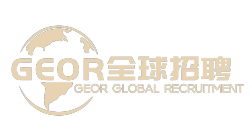Foreign Worker Recruitment Strategy: A Practical Guide to Transnational Employment for Enterprises
Foreign Workers Recruitment Strategy: A Practical Guide for Enterprises to Employing Multinational Workers
Under the wave of globalization, in order to improve production efficiency, expand overseas markets or introduce professional technology, foreign workers are often recruited. However, transnational employment involves multiple challenges such as policies and regulations, cultural differences, and recruitment channels. From demand analysis to landing management, this paper provides systematic solutions for enterprises to help attract and manage foreign workers efficiently.
Clarify employment requirements: accurately locate positions and talent standards
Enterprises need to determine the recruitment direction according to business objectives. For example, if manufacturing enterprises need to optimize production lines, they can recruit foreign skilled workers with specific skills (such as precision machinery operation and automation programming); if agricultural enterprises need seasonal labor, they can consider recruiting foreign workers with agricultural planting experience. Through job demand analysis, the talent standard is refined, covering dimensions such as skill level, work experience, and language ability. For example, in order to introduce advanced welding technology, an automobile manufacturing enterprise needs to recruit foreign workers with international welding certification.
At the same time, companies need to evaluate the job suitability of foreign workers. For example, physical labor positions need to examine the candidate's physical fitness and ability to resist pressure; technical positions need to verify their skill certificates and project experience. Avoid inefficient recruitment due to ambiguous needs by developing clear evaluation criteria.
Policy Compliance and Process Management: Building a Framework for Legal Employment
The primary challenge of transnational employment is policy compliance. Companies need to conduct in-depth research on the labor, immigration and visa policies of the target countries. For example, some countries have clear minimum wages, working hours, and social security contributions for foreign workers; certain industries (e. g., construction, medical) may require foreign workers to have specific qualifications or local certification. It is recommended that companies work with professional bodies or legal advisors to ensure that the recruitment process complies with local regulations.
In addition, companies need to improve their internal management systems. For example, establish a compensation and welfare system for foreign workers to ensure that they enjoy the same treatment as local workers or conform to international practices; develop cross-cultural communication and conflict resolution mechanisms to reduce management risks caused by cultural differences. Reduce employment risk through compliance and institutionalization.
Channel expansion and precise reach: attracting foreign workers in multiple dimensions
The selection of recruitment channels directly affects the efficiency of talent acquisition. Enterprises can expand the candidate pool through the following methods:
- international recruitment platform : use Indeed, Monster, Glassdoor and other global recruitment websites to publish job information and accurately push it to the target population through algorithms; Use the "talent search" function provided by the platform to actively contact qualified candidates.
- cooperation with professional organizations : cooperate with labor dispatch companies and job agencies to quickly locate suitable workers by using their resource networks; establish contacts with overseas vocational training institutions and industry associations, participate in job fairs or industry forums, and directly contact potential candidates.
- social media and employer brand : operate corporate accounts on social platforms such as Facebook, Twitter and LinkedIn to show the company's culture and working environment; Publish work scenes and life clips through short video platforms (such as TikTok and YouTube) to attract the attention of foreign workers. For example, a farm successfully recruited a group of seasonal laborers by sharing videos of workers picking fruit.
Interview and evaluation: scientific screening and cultural adaptation
The interview should take into account both skills and cultural adaptation. It is recommended to adopt multiple rounds of interviews and diversified evaluation methods:
- skill test : verify the actual skill level of the candidate through practical assessment, online test or simulation task. For example, an electronics factory requires workers to complete the circuit board welding task on site.
- Cross-cultural communication assessment : Examine candidates' cross-cultural adaptability through behavioral interview methods (such as STAR rules), such as asking about their past collaboration experience in multiple teams or how to deal with language barriers.
- language proficiency verification : through professional language tests (such as TOEIC, IELTS) or situational dialogue, to ensure that candidates have the required language level of the position. For example, customer service positions require fluent English communication skills.
Entry and integration: full-cycle support for foreign workers to land
The successful landing of foreign workers requires systematic support from enterprises:
- induction training : provide induction training covering company system, safety specification and operation process to help them adapt to the new environment quickly; Arrange "cultural mentor" to help them understand local living customs and workplace etiquette.
- life support : help solve practical problems such as accommodation, transportation, medical care, etc., such as providing staff dormitory or rent subsidies; organize cultural exchange activities and help them establish social networks.
- career development : develop a clear skill improvement plan and promotion path, such as providing regular technical training or job rotation opportunities; Through performance evaluation and feedback mechanism, help them achieve personal growth.
Continuous optimization and long-term management: improving the efficiency of multinational employment
Enterprises should regularly resume recruitment and employment processes to optimize management strategies. For example, to understand the needs and pain points of foreign workers through employee satisfaction surveys, analyze the input-output ratio of recruitment channels, adjust resource allocation, pay attention to policy changes, and update compliance programs in a timely manner. Through continuous improvement, improve the efficiency and effectiveness of transnational employment.
Recruiting foreign workers is an important part of the global layout of enterprises. Through clear requirements, compliance operations, channel expansion, scientific assessment and full-cycle support, enterprises can efficiently attract and manage international talents and inject new vitality into business development. With the growth of transnational labor demand, scientific talent management will become the core element of enterprise competitiveness.
